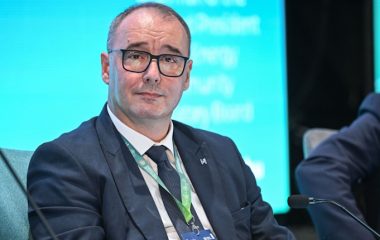
Photo: CMS
Authors: Marija Mušec, Partner, and Šime Dujmović-Maruna, Associate at law firm Bardek, Lisac, Mušec, Skoko doo, in cooperation with CMS Reich-Rohrwig Hainz Rechtsanwälte GmbH
Croatia is rolling out the energy efficiency obligation (EEO) scheme for the second year in a row. EEO places an obligation on obliged parties (OPs) to achieve quantitative energy savings targets during a defined period of time across their customer portfolio. There is a regulatory enforcement under which OPs are penalised for failure in case of not achieving energy savings.
It is certainly a scheme that places OPs are in a conflicting position: they are energy sale businesses now expected to reduce energy consumption, hence, eating into their own profit. As a result, cost recovery matters will be their prime concern. The energy efficiency obligation system is being implemented as a response to the obligations stemming from the Directive 2012/27/EU on energy efficiency of 2012 as further amended in 2018 (amended EED).
The member states (MSs) are expected to set a cumulative end-use energy savings target that has to be achieved by December 31, 2020, either through an EEO scheme, one or more “alternative policy measures” or a combination of the EEO scheme and alternative policy measures. The cumulative end-user target amounts to yearly energy savings of 1.5% of annual sales to final consumers. The amended EED extended the energy savings obligation to achieve new annual energy savings of at least 0.8% of final energy consumption for all MSs, but Cyprus and Malta (0,24%) in 2021-2030 and beyond.
Most European Union countries, Croatia included, have opted for a combination of EEO and alternative policy measures.
EEO is imposed over an obligated party. The obliged party in Croatia is the energy supplier i. e. all entities that supply energy to their end customers (including electricity, natural gas, heat energy and retail sale of petroleum products, gasoline, heating oils and liquified petroleum gas).
The annual threshold for EEO for energy suppliers is scheduled to be halved to 50 GWh next year
In 2019 the EEO applied only to the energy suppliers that supply more than 300 GWh. This year, this threshold was lowered to 100 GWh of energy. Finally, in 2021, the third year of the scheme rollout, the threshold will be as low as 50 GWh.
The Ministry of Environmental Protection and Energy sets an annual EEO target in kilowatt-hours for each OP by June 30 of the current year for the following year.
The EEO is calculated as 1.5% of the annual energy sale of the OP to the end customers in the year preceding the current year. In certain cases it can be slightly adjusted e. g. for energy supplied to the producer or supplier of heat energy or for a percentage of energy efficiency target already achieved with “alternative policy measures.”
The ministry is expected to receive the annual reports on the implementation of efficiency obligation from the OPs by March 1 of the current year for the previous year.
When the OP has missed its individual EEO target by less than 10%, the missed amount increases next year’s obligation.
The penalty for the obliged party that has missed its individual energy efficiency obligation target by more than 10% is the factor of the missed target in kilowatt-hours and the investment cost for 1 kWh
If the OP has missed its individual EEO target by more than 10%, it is penalised with a penalty calculated as the factor of the missed target in kilowatt-hours and the investment cost for 1 kWh. The investment cost for 1 kWh is defined by the state Environmental Protection and Energy Efficiency Fund. Currently, it values 1 kWh at HRK 2.19 (EUR 0.3).
This translates to a significant financial burden.
Some of the largest energy suppliers in Croatia supply around 8 TWh per year. For example, if an energy supplier has supplied 8 TWh of energy in 2019, the efficiency obligation will amount to 120 GWh in 2021 (if there are no adjustments). If such a supplier has missed entirely on its EEO target (i. e. no energy savings) then it will be subject to penalties in 2021 of EUR 36 million.
There are four typical models how an energy supplier can meet its EEO target and avoid penalties.
One model is to enter into a sufficient number of ESCO agreements that would result in achieved savings equal to or higher than the OP’s target. Further savings can be reached with the application of new technologies, including the installment of advanced electricity meters. Investment in renewable energy sources that are not included in an incentive system is also counted towards fulfilling EEO obligations. Finally, an OP can purchase verified savings from third parties – if an ESCO company has a verified saving, an OP may seek to purchase this verified saving.
Development of an online auction-based platform where anyone with verified savings could offer their own savings to the OPs would greatly facilitate the creation of a vibrant verified savings market
We expect some difficulties in the EEO scheme rollout. Energy suppliers are not fully aware of the potential liability, nor of the options of achieving energy savings. Certainly, cost recovery matters should be considered carefully.
As a result of the scheme, it is anticipated that Croatia will develop a market for trading with verified savings (i. e. trade of energy savings certificates). Energy renewal of private and public buildings has seen an increase. Executed building renewals are already achieving substantial savings. Such savings could be verified and offered by private and public entities to the OPs. Development of an online auction-based platform where anyone with verified savings could offer their own savings to the OPs would greatly facilitate the creation of a vibrant verified savings market.
Such developments will, on the other hand, boost the ESCO market as they will open a window to ESCO companies to trade with verified savings and multiply benefits they draw on the ESCO agreements.


















Be the first one to comment on this article.